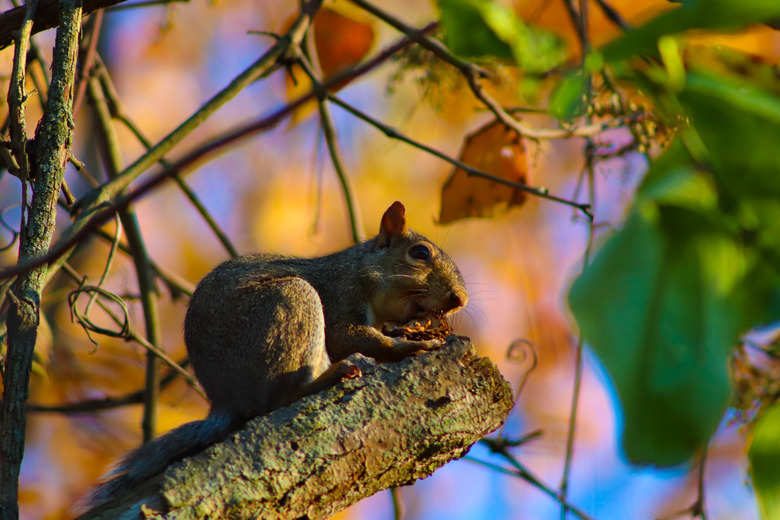Early Life Stages Of Squirrels
Over 200 species of squirrels live around the planet.These include ground, flying and tree squirrels. A squirrel comes into the world without hair, teeth or strong nails on its feet, which it later develops as an adult. After about 14 weeks the young adult is ready to be on its own.
Gestation and Birth
Gestation and Birth
The mating season for squirrels runs February through May. When a female squirrel is in heat, the male can smell her up to a mile away. Competing males engage in a frenzied high-speed chase instigated by the female. This courtship leads to copulation, insemination and pregnancy. Once pregnant, the female needs to make a nest high in a tree. Some species make their nest, or "drey," in an underground burrow. The gestation period varies from 33 to 60 days, depending on the species. Females give birth in the spring and late summer.
Birth to 2 Weeks
Birth to 2 Weeks
At birth a baby squirrel, or kitten as it is called, weighs about 1 oz. and measures approximately 1 inch in length. It has no fur or teeth and its eyes and ears are closed. Kittens have four toes on their front feet and five on back feet. Sweat glands are also on their feet located on paws between toes.
3 to 5 Weeks - Young Juvenile
3 to 5 Weeks – Young Juvenile
Kittens at 3 to 5 weeks old have grown to 4 inches long excluding tail and begin to gain an inch a week. Their eyes are still closed but their ears are open. Teething begins with lower front incisors erupting. By 4 weeks, the squirrel begins to grow fur and its eyes open.
6 to 14 Weeks - Adolescence
6 to 14 Weeks – Adolescence
The young kitten is fully covered in fur with keen senses of sight, sound and smell during its adolescence. Its important chewing cheek teeth appear. The adolescent can fully sit up and curl its tail. Now around 7 to 8 inches long, the squirrel is furry all over its body including the underside of its tail. It can stand up and hold food in its front paws. At 8 weeks, the front and back toenails become sharp enough to let it climb tree bark. Mother teaches the adolescent squirrel survival skills. It sleeps less and play fights with siblings. At 8 to 12 weeks its body is fully developed. At 12 to 14 weeks, it's three-quarters of its adult size.
Young Adult
Young Adult
Young adult squirrels live on nuts, fungi, roots, seeds, fruits, lichens, pine cones and bark. They consume their own body weight every week and can swim in an emergency using a "dog paddle" motion with their tail as a rudder. It can now run at high speed, and the young adult is ready to leave the nest.
Cite This Article
MLA
Boone, Dan. "Early Life Stages Of Squirrels" sciencing.com, https://www.sciencing.com/early-life-stages-squirrels-8448776/. 22 November 2019.
APA
Boone, Dan. (2019, November 22). Early Life Stages Of Squirrels. sciencing.com. Retrieved from https://www.sciencing.com/early-life-stages-squirrels-8448776/
Chicago
Boone, Dan. Early Life Stages Of Squirrels last modified March 24, 2022. https://www.sciencing.com/early-life-stages-squirrels-8448776/
